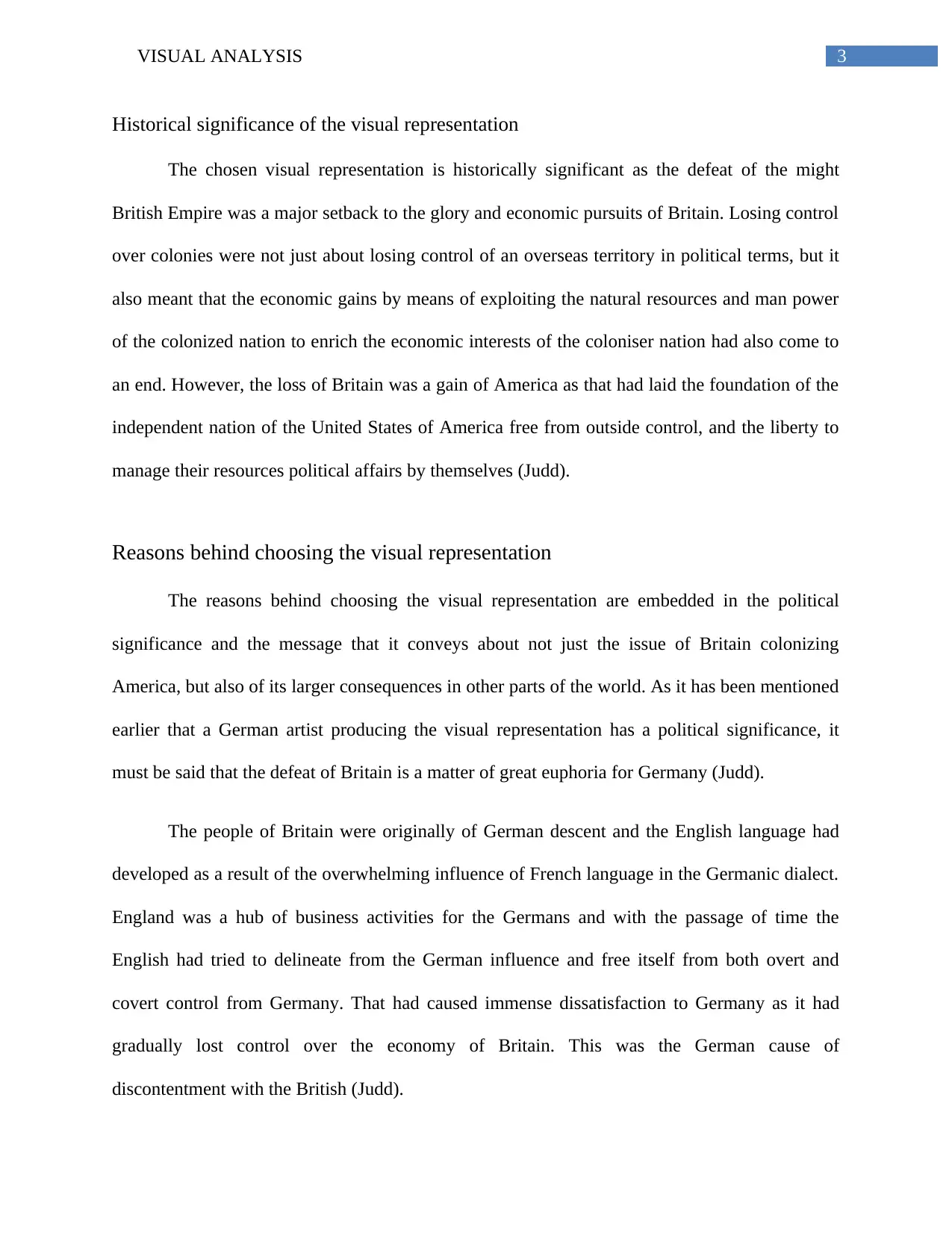University History Report: Visual Analysis of American Independence
VerifiedAdded on 2022/12/05
|7
|1148
|422
Report
AI Summary
This report presents a visual analysis of an engraving depicting the end of the American War of Independence, focusing on its historical context and significance. The chosen visual, created by German artist Daniel Chodowiecki, portrays the defeat of the British army and the victory of the Americans. The analysis explores the symbolism of the visual representation, highlighting the American soldiers' triumphant posture and the British soldiers' acceptance of defeat, which signifies the end of British colonial rule and the establishment of American sovereignty. The report delves into the historical context, including the Treaty of Paris in 1783, and emphasizes the global implications of the British defeat, particularly its influence on other colonized nations. The report also discusses the political significance of the visual representation from a German perspective, highlighting the historical rivalry between Germany and Britain and the broader effects of the American victory on global politics. The report references the provided textbook to support its claims, making this a comprehensive analysis of the visual representation and its historical implications.
1 out of 7












![[object Object]](/_next/static/media/star-bottom.7253800d.svg)